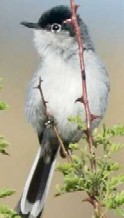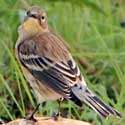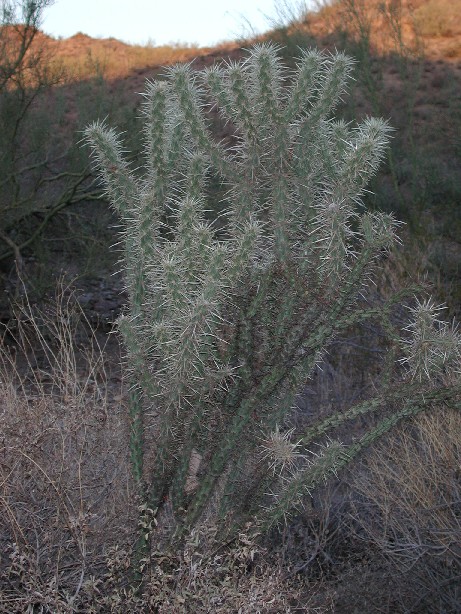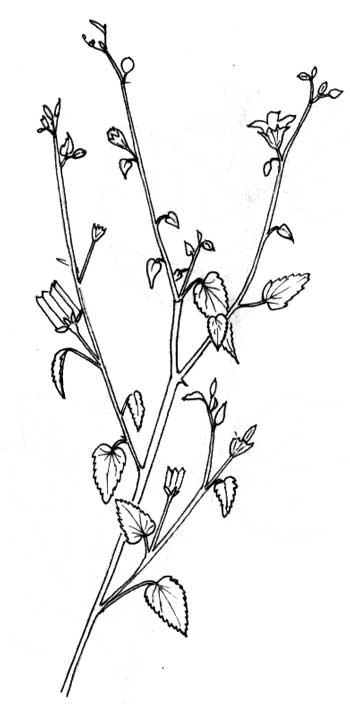Wild Flower Report ¦ Field Trip Reports ¦ Mammals ¦ Winter Birds ¦ Cacti ¦ Shrubs and Trees
|
Eagletail Mountains Wilderness is a vast desert preserve located about 130 km west of Phoenix. Included in the area are magnificent mountains including stately Courthouse Rock, sheer cliffs, deep canyons, desert plains, bighorn sheep, desert mule deer, reptiles, and an extensive desert flora. Hikes of one day or several via backpack are possible. Desert solitude and beauty will immediately surround the adventurer. No cars. No buildings or utility poles. Out of cell phone network. Access is via I-10. Driving west from Phoenix, the town of Tonopah is at Exit #94, continue 13 miles further to the Salome Rd. Exit #81 turning south onto the Harquahala Valley Road. Drive five miles south to Courthouse Road and turn west. This road makes a bee-line for Courthouse Rock. After 7 miles the road angles northwest as Pipeline Rd (a major gas pipeline runs beneath the roadway); the road becomes a bit sandy and rough but is passable for most cars ... about 4 miles further there is a turn off on the left to the main trailhead and a BLM wilderness kiosk ... about a half mile in. This short section of road might be too rough for some cars. The trail follows an old jeep road on the west side of Courthouse rock and over a low pass. Walking along desert washes will yield many interesting desert plants and fauna. |
View Larger Map. The hiker symbol indicates location of main trailhead for Eagletail Mountains Wilderness. Automobile icon is Exit #94 from the Interstate-10 and the blue balloon is another area covered by the Sonoran Desert Naturalist, Saddle Mountain. |
Arriving at dawn temperatures were just a bit above freezing and a chilly breeze was coming through the low pass behind Courthouse Rock. Temperatures warmed quickly, however, as we followed the abandoned jeep road as far as Indian Spring. Many flowers were open, especially Golden Eye and Jojoba. The Bitter Condalia trees were in full bloom bringing in many honey bees. The very sweet perfume of the condalia blooms was detectable 50 meters away. We covered about 8 km distance for a day hike.
Winter BirdsMore Common Listed First:




|
Greater Roadrunner photo by Marc Borom. |
![]()
MammalsNone were seen on trip of 16 Dec 2000 |
![]()
In order of Abundance:
|
 Buckhorn Cholla photo by Mike Plagens. |
Shrubs and TreesMore common species listed first.
|

Indian Mallow occurs on rocky slopes particularly along drainages in partial shade. The flowers are pale yellow-orange. |
Yellow Flowers:
|
White/Green Flowers
|
Lavender, Pink, Purple Flowers
|
Orange, Maroon
|
Grasses
|
Lots of Painted Ladies and a few Queens.
Sonoran Desert Naturalist Home
Page
Desert Places
Field Guide
Copyright
Michael J. Plagens, page created 15 January 2001,
updated 8 Aug. 2016.